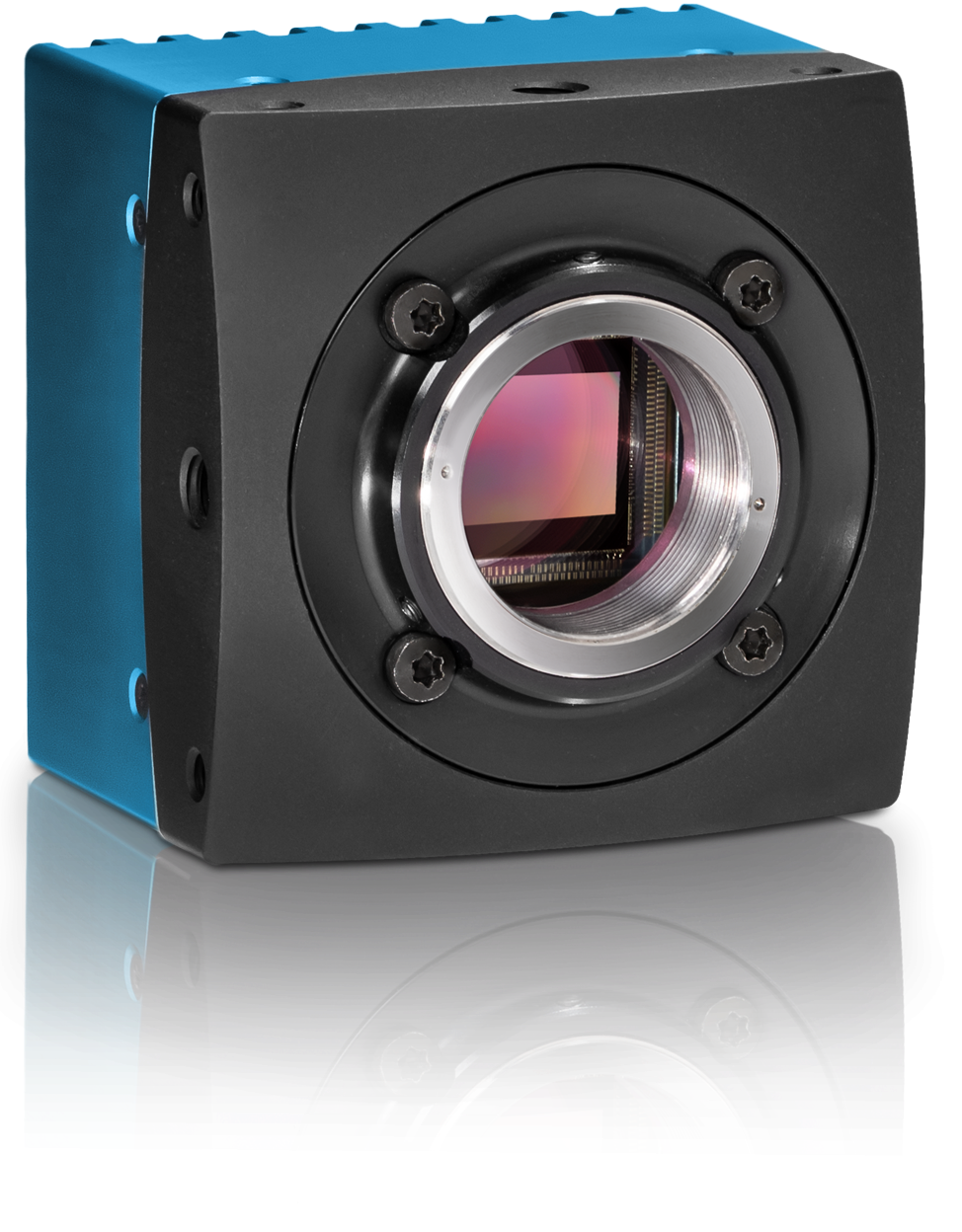Researchers, physicians, and biomechanists have been studying the science of human motion for decades. Today, using optical imaging technology and marker-based motion analysis, they are uncovering new solutions by examining the intricate interactions between bones, joints, muscles, tendons, and ligaments.
 Minimal dimensions make the Mikrotron MotionBLITZ Mini GigE camera suitable in very confined spaces. Internal memory allows the camera to be operated without a connection to a notebook or PC. Up to 6.5 seconds can be recorded at full 1696 x 1710 resolution and 525 fps speed. Image Credit: Mikrotron
Minimal dimensions make the Mikrotron MotionBLITZ Mini GigE camera suitable in very confined spaces. Internal memory allows the camera to be operated without a connection to a notebook or PC. Up to 6.5 seconds can be recorded at full 1696 x 1710 resolution and 525 fps speed. Image Credit: Mikrotron
Motion analysis is most commonly used in improving sports performance. The primary task here is to study, train and optimize the complex kinetics involved in an athlete's motion sequences. Elite swimmers, for instance, may want insights into boosting the speed of their flip turns, while golfers will want to precisely adapt their club to their swing.
In addition to sports, many doctors and medical professionals employ video motion analysis in the field of rehabilitation. By identifying biomechanical or gait abnormalities, doctors can create therapies that improve the lives of those with physical or neurological impairments. Motion analysis is also frequently used in automotive crash tests when researching how an impact will affect passengers, therefore providing knowledge into safer engineering.
Motion analysis is not limited to human behavior research. The science of animal locomotion examines the fundamental principles that underlie animal movement. Researchers studying animal locomotion record video of legs, fins, wings, and other structures using high-speed cameras in an effort to clarify the fundamentals of animal energetics. Inspired by the unique gait patterns and movement dynamics observed in animal locomotion research, "biomimicry" engineers have applied it to sectors ranging from robotics to agriculture.
No matter the application, this analysis relies heavily upon professional-grade cameras to acquire accurate tracking data for motion reconstruction. It is now standard procedure to use not just one but multiple synchronized cameras to create 3D images or to track the same event from several angles.
Because cameras are critical to success, what are the most important considerations when selecting a camera for motion analysis? Experience tells us there are three: resolution, frame rates, and recording durations. Camera dimensions may also play a role.
Frame Rates
Required frame rates are determined based on the motion being analyzed. For instance, a gait analysis needs fewer frames per second (fps) to process than a tennis forehand stop analysis or any other activity involving very quick, complex movements. In general, the camera you choose should offer a frame rate of at least 500 fps. At 500 fps or higher, researchers can slow down fast moving objects or events to obtain more detailed information about the structure, function, and motion of various mechanicals.
High Resolution
Resolution refers to the level of detail contained in an image. More specifically, it refers to the number of pixels that exist within each frame. The higher the resolution, the richer the pixel count, and the more data the processing software has to work with when micro-analyzing intricate movements. We should note here that gaining full advantage of a camera's resolution in a motion application may require approximately six times more lighting brightness than with standard video. A prime example of a high resolution, fast frame rate camera is the Mikrotron MotionBLITZ EoSens Mini GigE CMOS camera. Leveraging the GigE Vision interface, it acquires detailed images at a resolution of 1,696 x 1,710 pixels at a maximum recording speed of 525 fps.
Recording Time
It is not unusual to be confronted with a field application where a camera cannot be connected to a laptop for recording. This can be due to cables getting in the way of the action or because of logistical obstacles such as the risk associated with transporting fragile electronic devices, or the hassle of packaging a large quantity of parts. In these circumstances a camera with internal memory is extremely helpful in saving motion processes for analysis. Memory requirements can change based on whether you are recording the entirety of an event, such as a 200-meter race or just the runners leaving the blocks. Generally speaking, the camera's memory shouldn't influence or even define the test sequence; rather, it should adhere to the established test methodology.
Not all high-speed cameras have internal memory but one that does is the Mikrotron MotionBLITZ Cube4. This advanced camera can record up to 13 seconds at 1280 x 1024 resolution and 1010 fps speed, enabling efficient and reliable monitoring of the processes with minimal effort. If necessary, the user can lower the frame rate and/or resolution to record for an extended period of time. For example, if the camera is set at a resolution of 100 × 800 pixels and a frame rate of 300 fps, a maximum of 30 seconds can be recorded. Mikrotron also provides long-time recording systems that can record anywhere from several minutes to several hours.
Camera Size
Frame rates, resolution and recording time are all important considerations when choosing a camera for motion analysis. Yet camera size can also be a factor depending on the application. In sports analysis, a large camera can be unpractical or even dangerous to mount near an athlete in motion, particularly in a confined space. Smaller cameras also make it easier to disassemble and move a lab-based motion capture system to an outdoor or off-site location.